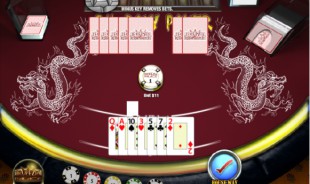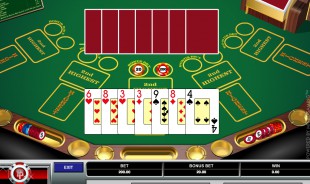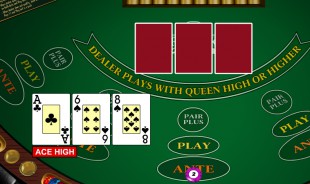About Poker games
The casino hosts a whole range of emblematic games that bring with them their clichés and stereotypes. For most, the first image that comes to mind when people are playing craps is a frenzy of stimulated gamblers gathered around a table spurring on the guy at the end of the table, rattling dice around in his hand screaming good luck charms. The thought of the roulette wheel conjures up images of placing huge amounts of money on red, and blackjack is so frequently associated with the shifty guy on the end of the table robotically repeating ‘hit me’. However, there is nothing more emblematic of a casino than the variety of notorious poker faces, and little phrases such as ‘read ‘em and weep’, ‘I’ll see you and raise you’ and the infamous ‘all in’. There is a huge amount of fun to be had in poker, and it’s a game that is not entirely dependent on luck. The social interactions of the game are paramount to players’ performance, and this makes it a wonderful mixture of following your best judgement, bluffing and reading others. This article gives a basic overview of the common types of poker that are found in casinos.
Texas Hold ‘em
Texas Hold ‘em is the most commonly played in casinos. The player to the left of the dealer must place a ‘small blind’, and the player to his or her left must place a ‘big blind’ (double the value of the small blind). Each player is then dealt two cards, which is then followed by the initial round of betting. Each player evaluates the value of his or her hand in relation to several criteria, such as whether or not the cards are good enough to keep playing, whether s/he believes that other players’ cards are likely to considerably outweigh his or her own hand, or whether his or her current level of chips allows the player to take this particular risk. The first player to bet is the person to the left of the big blind (three places to the left of the dealer). The bet must be at least the value of the big blind, and if the game is ‘no limit’, the player may bet however much s/he pleases. The betting continues around the table clockwise, if a player is not willing to match the level of bets on the table then s/he folds and is out of the round. If a player wishes to raise the stakes then s/he may do so, and each player must match this in turn. When everyone’s bet is even, the ‘flop’ can be drawn. This consists of the dealer laying out three communal cards face-up on the table, which each player effectively adds to their hand, giving them a total of five cards at this stage. As before, a round of betting takes place until all bets are even. The ‘turn’ is then drawn by the dealer, which is a fourth communal card face-up on the table, giving each player six cards. After another round of betting, a fifth and final communal card is dealt face-up with the others, known as the ‘river’. At this stage, each player has a total of seven cards, two of which are still unknown to all other players. It should be noted that the dealer usually ‘burns’ a card before the flop, river and turn, to further randomise the cards. The best five cards of a player’s hand are what count. There is a final round of betting here, and then all who are still playing must reveal their hands to the group. The highest hand wins the pot. In the case of two or more players having the same hand (that’s to say, the same top five cards), the pot is split between them. The round is now over, and the dealer (or dealer chip) moves one place to the left, changing who must put down a small and big blind.
Stud Poker
There are many varieties of stud poker, but they all share the basic characteristics. 7 card stud is the most commonly found in casinos, and shares many of the principals of Texas Hold ‘em. As opposed to the blind system, it is common for everyone to contribute a small ante. Two cards are dealt face down to each player and one card is dealt face up. The player with the lowest ‘upcard’ may have to pay a ‘bring-in’, and then betting continues from that point going clockwise. After a round of betting, the dealer burns a card and gives each player another upcard. Another round of betting begins with the player whose two upcards form the best hand (which continues to be the format for the remainder of the rounds). Each player is given a third upcard, followed by a round of betting, a fourth upcard, followed by a round of betting, and finally a downward, followed by a final round of betting. As with Texas Hold ‘em, each player forms their hand using their best five cards, and the winner takes the pot. Other varieties of stud poker include 5 card stud, 6 card stud, Mississippi Stud and Mexican Stud.
There are many other varieties of poker played in casinos. One such example is Pai Gow poker, which is different in that it includes the use of a joker. Its format is considerably different, in that seven piles of seven cards are dealt to the table and assigned to players, and each player is specifically aiming to outplay the ‘banker’. The amount of variations on Pai Gow poker make it worthwhile to study in individual casinos, however the basic game is also worth getting to grips with. Other, less-played, poker variants include Omaha Hold ‘em, Countdown and ‘Draw’ varieties, in which players are initially dealt a full hand and are then granted the opportunity to improve upon it, however it is less usual to find these variants in casinos.




